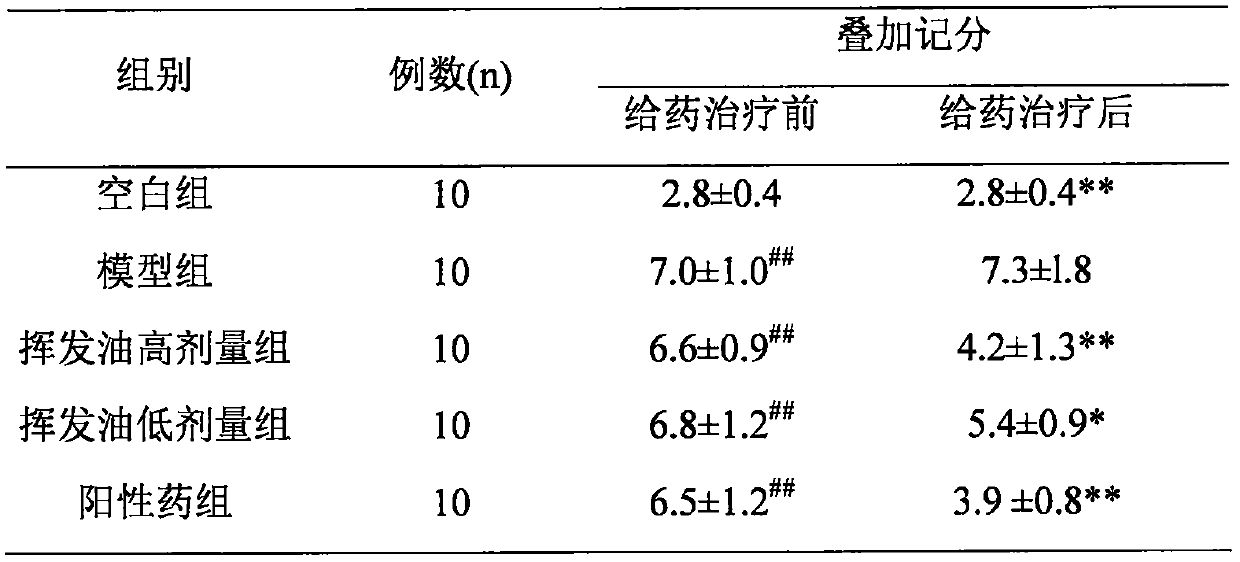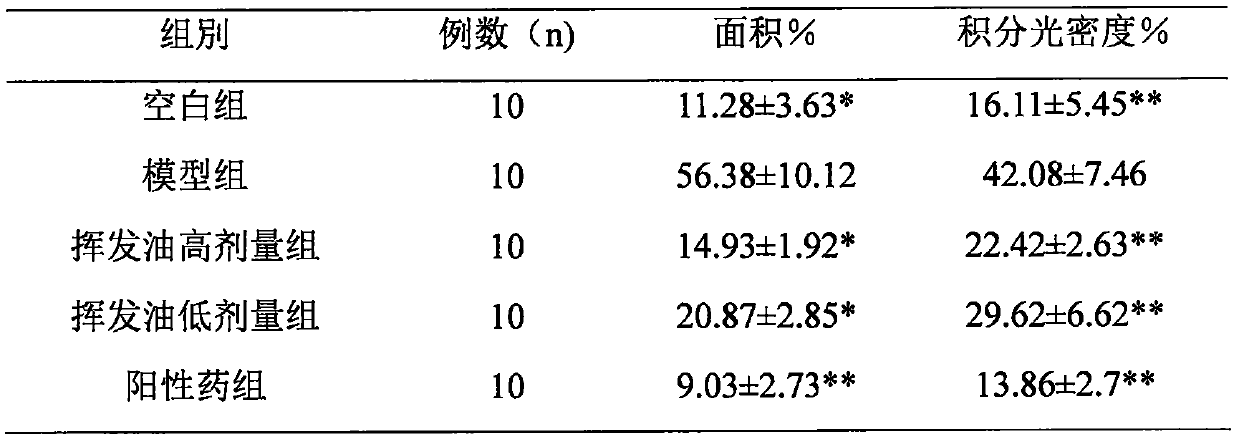Application of maidenhair volatile oil in rhinitis resistance medicine
A technology of peacock grass and volatile oil, applied in drug delivery, drug combination, medical preparations containing active ingredients, etc., can solve the problems of ineffectiveness and poor curative effect of rhinitis
- Summary
- Abstract
- Description
- Claims
- Application Information
AI Technical Summary
Problems solved by technology
Method used
Image
Examples
Embodiment 1
[0015] Embodiment 1: steam distillation method prepares malachite volatile oil
[0016] Take the whole herb of Peacock Herb, remove impurities, weigh 1kg, crush it, pass through a 20-mesh sieve, add 8L of tap water, extract by steam distillation for 3 hours, separate the volatile oil layer, add anhydrous sodium sulfate to dry, and obtain the volatile oil of Peacock Meadows. The yield was 0.17% (by weight).
Embodiment 2
[0017] Embodiment 2: steam distillation method prepares malachite volatile oil
[0018] Take the whole herb of Peacock Herb, remove impurities, weigh 1kg, crush it, pass through a 50-mesh sieve, add 10L of tap water, extract it by steam distillation for 6 hours, separate the volatile oil layer, add anhydrous magnesium sulfate to dry, and obtain the volatile oil of Peacock Grass. The yield was 0.20% (by weight).
Embodiment 3
[0019] Embodiment 3: Preparation of malachite volatile oil by carbon dioxide supercritical fluid extraction
[0020] Take the whole peacock herb, remove impurities, weigh 1kg, pulverize, and pass through a 60-mesh sieve. Turn on the power, turn on the cooling cycle and heating, set the temperature of the extraction cylinder to 30°C, the temperature of the separation tank I to 25°C, and the temperature of the separation tank II to 20°C. Put the malachite powder into the extraction tank and start the CO 2 Circulation system, set the flow rate to 10L / min. Adjust the pressure of the extraction cylinder to 15MPa, the pressure of the separation kettle I to 8MPa, and the pressure of the separation kettle II to 4MPa. When each parameter reaches the set value, start timing, and through 60min extraction, take out the volatile oil from the discharge port of the separation kettle I and the separation kettle II, to obtain the malaise volatile oil, and the extraction rate is 0.22% (weight...
PUM
 Login to View More
Login to View More Abstract
Description
Claims
Application Information
 Login to View More
Login to View More - R&D
- Intellectual Property
- Life Sciences
- Materials
- Tech Scout
- Unparalleled Data Quality
- Higher Quality Content
- 60% Fewer Hallucinations
Browse by: Latest US Patents, China's latest patents, Technical Efficacy Thesaurus, Application Domain, Technology Topic, Popular Technical Reports.
© 2025 PatSnap. All rights reserved.Legal|Privacy policy|Modern Slavery Act Transparency Statement|Sitemap|About US| Contact US: help@patsnap.com



